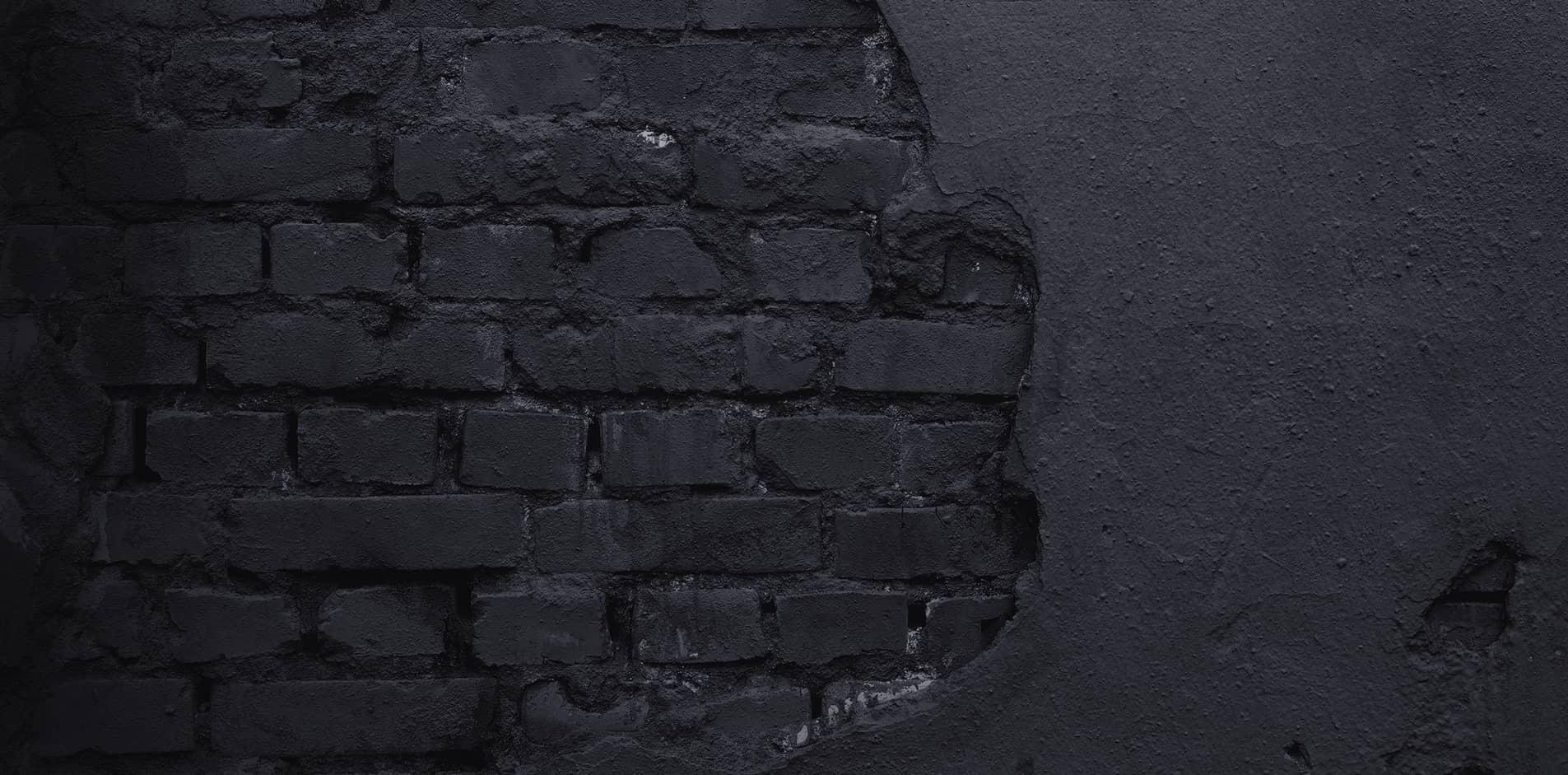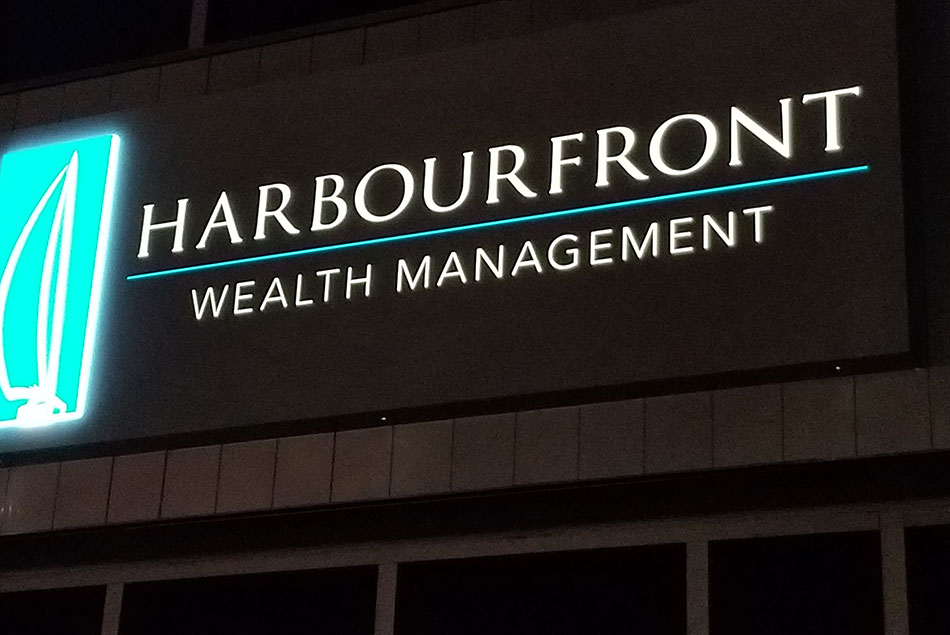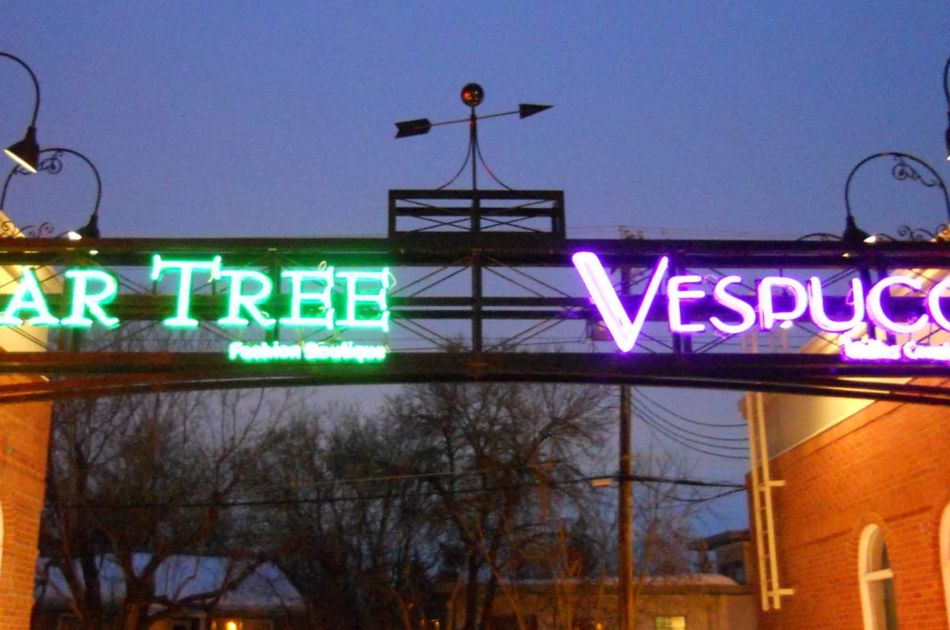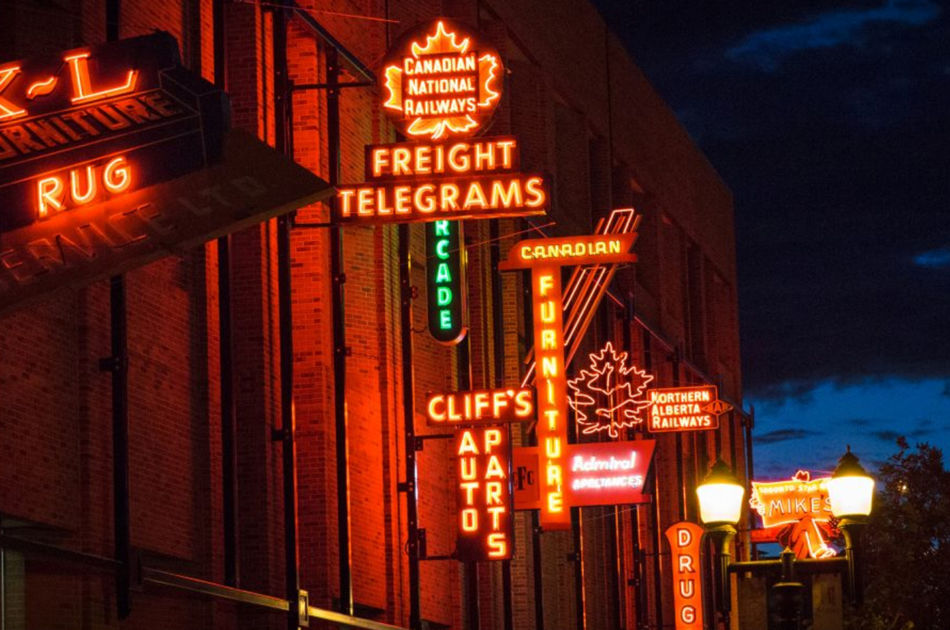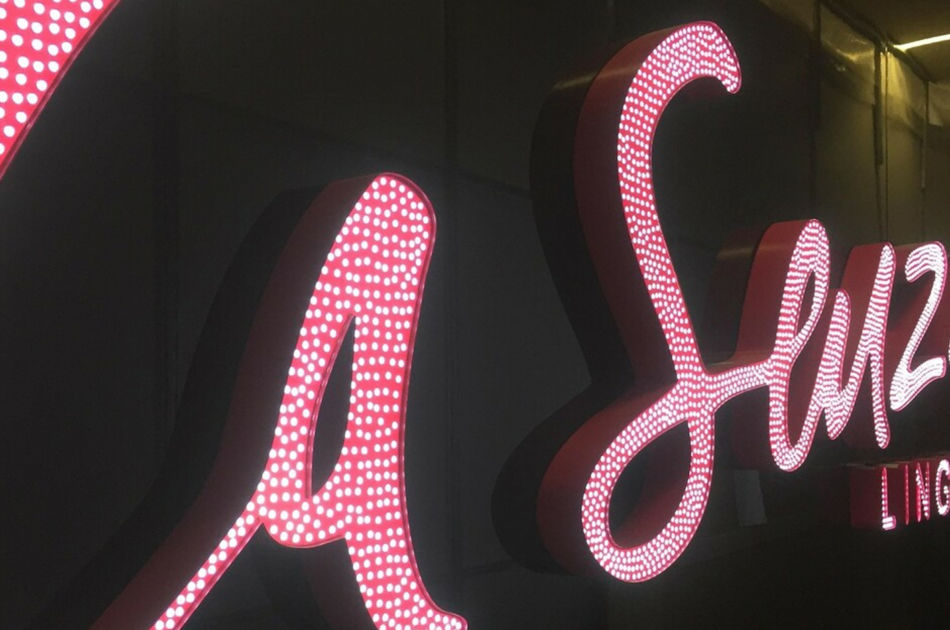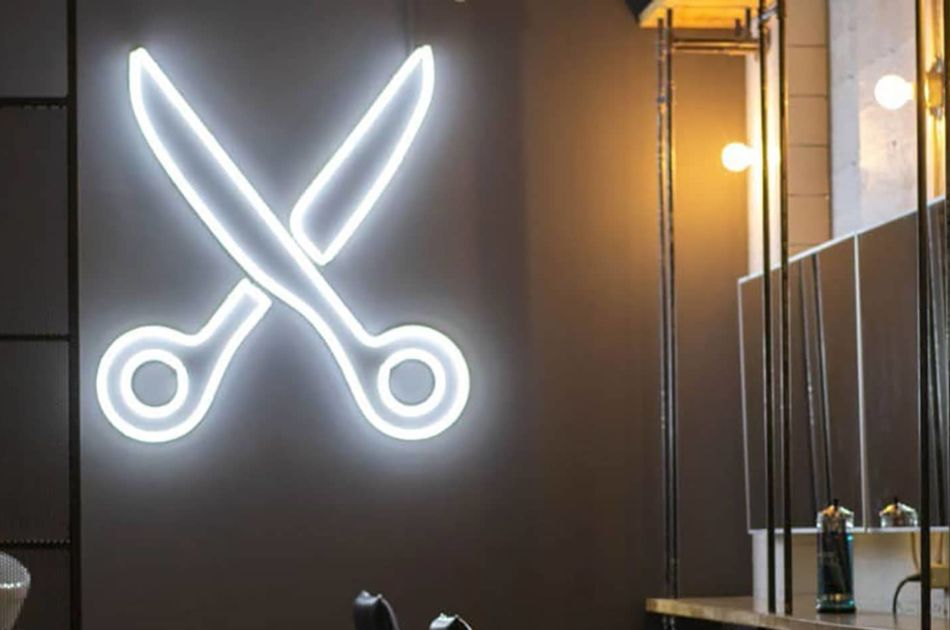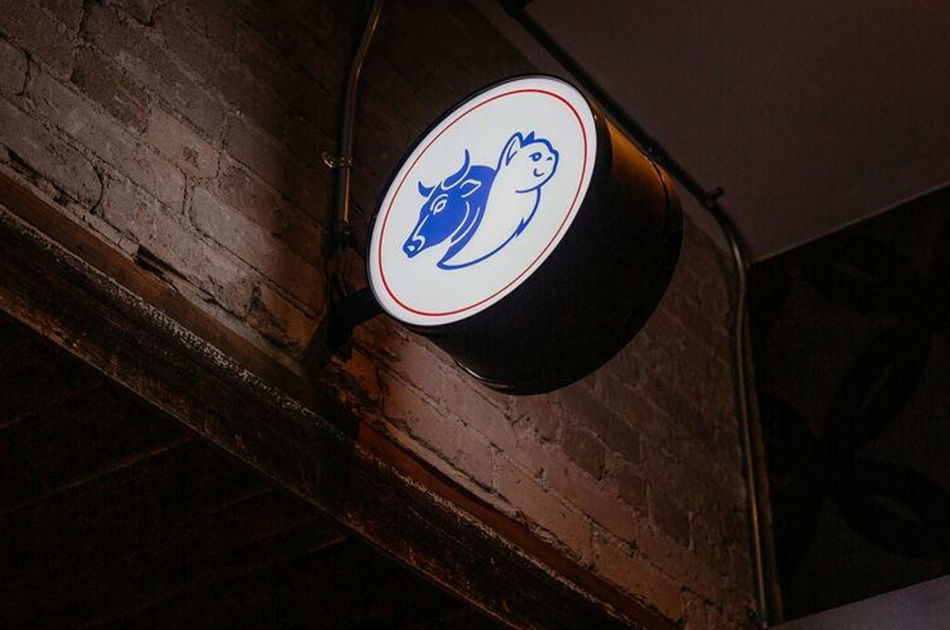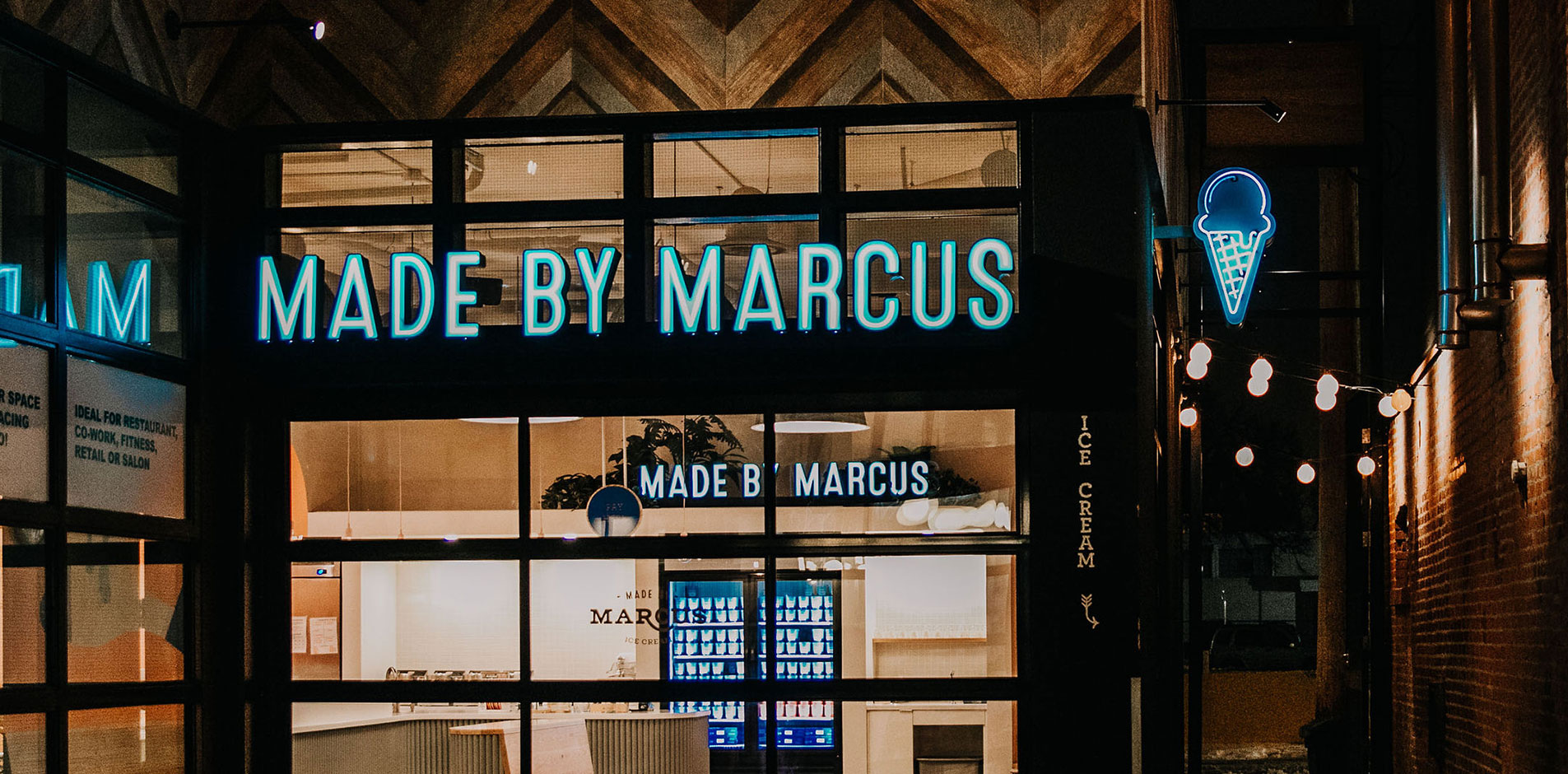What Is a Neon Sign?
Neon signs are signs that use electricity and gas to create colored light. They were most popular in North America between 1920 and 1960, but they are still used and appreciated today. Collecting and restoring old vintage neon signs is a very popular pastime for many individuals, especially those old enough to remember them in the glory of their 1980’s resurgence. There is a lot to know about neon signs: their composition, their history, their uses, and their manufacturing process. Let’s get started.
How Big Is It?
Neon signs can come in any size and shape. They can be small enough to be a decoration on your wall at home, and they can be large enough to catch the attention of passersby on busy city streets at night. The only limit on the size of a neon size is your creativity and your electricity bill.
What Is It Made Of?
Neon signs are composed of long glass tubes that are able to discharge gas. These tubes are crafted to form letters, words, or images. The tubes will be filled with either rarefied neon or other gas types. Depending on the fill composition, the tubes will emit different colors. Traditionally, these tubes were made of lead glass, but in recent years there has been a push towards more environmentally conscious glass types; these will be safer for workers as well.
Neon gas fill will produce red light, and with a denser fill, this can be transitioned into a paler red or even a pink. Mercury vapor is used to create a soft blue light, and combining it with argon will produce a stronger blue emission. Mercury vapor is a good base for creating cooler colors like green and purple. The mercury/argon combination is frequently used in combination with UV-sensitive phosphors painted on the inside of the glass. Mercury produces UV light which reacts with these phosphors and allows for more color combinations. Argon is a very common component of tube sections emitting blue, green, yellow, or white light. Krypton gas is used in combination with colored glass; since krypton alone produces white light when activated, it can produce any color with the help of some paint. Xenon is another common gas added to other mixtures to add some additional color options.
Since the sign will have a glass exterior, it is important that you maintain and clean it properly. It is a good idea to wipe the dust off it regularly, and you can use a brush to get into small crevices (this will help its overall appearance since dust builds up here more quickly). If you find a simple dusting job does not fully restore the appearance of your neon sign, a washing is in order. After you unplug the sign, you can use warm water and soap to gently scrub down the glass. Make sure your cleaning product doesn’t contain any ammonia though, since this can break down and damage the glass. After it is clean, you can wipe it down with a lint-free towel and plug it back in.
Why Is This Sign Type Needed?
Neon signs are one of the most popular types of signage used by nighttime businesses like clubs, bars, and theatres. The vibrantly colorful signs are perfect for catching the attention of passersby and creating a welcoming, engaging environment before they even cross the threshold. Neon signs are also incredibly unique in that they can be adapted to any design style, color scheme, and more. This sign type also has a long lifespan, which is important for businesses that are quite permanent and do not have the need to change or move their signage at any point. One of the largest benefits of neon signs is their ability to be programmed: if you’ve ever wanted a dynamic sign, neon is the way to go.
When Was This Sign Type Invented and Why?
Neon was first discovered by British scientists in 1898, and the first sign using neon was debatably created in 1904. It wasn’t until 1910 at the Paris Motor Show that the first undisputed unveiling of a neon sign occurred. This unveiling actually sparked the first neon signage company, since the inventors realized what a lucrative market it could become. They were right. But before the neon sign that we know today, there existed a product called the Geissler tube. This had the very same principle as neon signs, but they simply did not use neon as a gas at that time. The one major problem with the Geissler tube was that the gas eventually dissipated and the tube could no longer function as a light. This problem was corrected, and fluorescent coating was the next invention that cemented a place for neon signs in the market. There were 20 additional colors available for neon signs thanks to fluorescent lighting, and now there are over one hundred. 1923 marked the arrival of neon signs to the United States, and they became one of the most stunning sign types to ever hit the North American market. Neon signs were designed to grab people’s attention, especially in darker environments, and they did just that. Even during the day, people would stop and stare at the spectacular invention that was the neon sign.
Types of Neon Signs
The main factor that can separate one neon sign from another is the type of gas used to fill it. Some signs are filled with only one type of gas, and they will appear solid in color and are often continuous. Other neon signs are more complex and will have many segregated components. Each component will be filled with different gas types and will be coated in different colored gas, which allows more creativity and flexibility during the design process. The two most common fills for neon signs are neon (obviously) and argon combined with mercury. You can create neon signs with varying complexities and design elements, so the possibilities are essentially endless as long as you have quality craftsmanship.
It is worth mentioning that not all neon signs are actually created with gas anymore. Some companies have transitioned over to using LED lights instead of ionizing gas filled tubes. LED lights are easier to install and can produce more dynamic results.
How Is a Neon Sign Made?
Neon signs have one of the most complex and intricate manufacturing processes, so let’s explore.
What Is the Manufacturing Process Like?
Traditionally, neon lights were created via gas that when ionized by electricity, would create colored light. The first step in making these neon signs is shaping the glass. This requires a skilled glass bender and access to the appropriate tools and equipment. The diameter of the tubes can range between 8 and 15 mm. With a wall only 1mm thick, shaping this thin glass is a very delicate process indeed. Once the glass has been properly formed, its interior surface may be treated with a coating or paint to produce different color effects. Once the tube has been treated, if it needs to be, it will be filled with gas and sealed. At each end of the tube, cold cathodes will be welded onto the gas to provide the electricity needed to activate the gas and produce colored light. Once each tube has been created to the design specifications, they can be carefully welded together to create a more sophisticated design.
You may wonder how a straight tube of gas can ever become the intricate pictures and words that are common in neon signs. It involves a process called tube bending. Before the glass tube is filled with gas and sealed, it is time to be manipulated into shape. One tube can have as many as 7-10 bends in it, and each one has the possibility of ruining the piece and requiring a restart. To create a bend, the glass is heated in a very specific spot to a precise temperature so it is malleable, and then air is blown into the glass tube to prevent it from collapsing in on itself while it is changing shape.
After the design has been fully formed, it is time to electrify it. The cathodes that were placed at the sealed ends of the tube will be attached to a current during installation, and they will provide the power needed to ionize the gas and produce the beautiful, vibrant colors that neon signs are known for.
Sometimes, a black or grey glass paint will be used to cover up certain sections of a design. This paint makes the glass surface opaque, preventing light from exiting. This is useful for creating breaks between letters in a word and adding depth to the design.
Nowadays, you’ll find most companies using LED lights instead of gas filled tubes, since they are easier to make and more reliable. However, the majority of the manufacturing process is still the same.
How Can Neon Signs Be Customized?
Neon signs can be customized in a wide variety of ways. You can design any complexity of sign you would like; as long as you have an experienced craftsman, you have essentially no limits. You can choose the color scheme, font type, style, layout, tube diameter, and more. Whether you are looking for a traditional motel sign, an integrated sign to attract customers to your club, or a decorative piece for a wall at home, you have total control over every feature of your sign. It’s simply up to you decide what kind of sign your are looking for, or have a consultation with a design team to help work out all the details of your project.
What is the Price Range?
Custom neon signs can cost anywhere from $250 roughly to over $1200. It all depends on the complexity and design elements required to bring your creation to life. Larger signs and those with more detail work will be more expensive, since they take longer to make and require more materials. They are also more difficult to transport and install, so the overall price will compensate for all of those additional factors. However, you won’t have to sacrifice all of your desired features just because you have a low budget. Your sign manufacturer will help you settle on a design that is pleasing to both your design ideas and your bank account. There is a lot of room to work out a payment schedule if needed, and they want to be flexible in order to acquire your business.
Our Neon Sign Manufacturing Service
The neon signs produced by PM Signs are made with high quality, reliable LED lights. You can come to the company with a vision in mind, or you can let the incredible design team guide you towards your perfect product. No matter how large or detailed your piece needs to be, the experienced craftsman employed by PM Signs will guarantee a flawless final product. They have all of the equipment and skills required to make your vision a reality.
At every step along the way, from design to fabrication to installation, the team at PM Signs will keep you informed and aware of everything you need to know. You can even tour the facility and have a look at the quality of materials that will be used to create your dream sign. You will have the opportunity to give final approval before installation, and you won’t be left on your won after that. PM Electrical has a team of certified electricians that will maintain and repair your LED neon sign whenever you need it. Hiring PM Signs is not just about the creation of a sign; it is a partnership that will last the lifetime of your custom sign and beyond.
Our neon sign manufacturing process ensures that your custom sign is completed on time and without error. Plus, we’ll stick to your budget without fail. We understand how important your sign is to your business, and that’s why your business is important to us.
